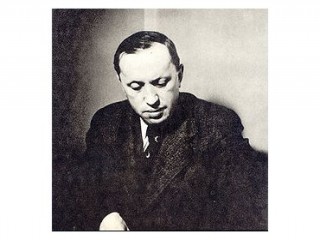
Karel Čapek biography
Date of birth : 1890-01-09
Date of death : 1938-12-25
Birthplace : Malé Svatoňovice, Bohemia, Austria-Hungary (now Czech Republic)
Nationality : Czech
Category : Famous Figures
Last modified : 2011-08-26
Credited as : Novelist, playwright, Gardener's Year
Čapek was a noted novelist, playwright, and essayist. He was perhaps the best-known Czech literary figure of the 1920s and 1930s.
Born in northeastern Bohemia on Jan. 9, 1890, Karel Čapek was the son of a physician. He studied philosophy at the Czech University of Prague, where he was influenced in his thinking by Henri Bergson and by modern American philosophy. In 1914 he earned a doctorate. He remained, except for numerous travels abroad, in Prague until the end of his life. In 1935 he married the well-known actress Olga Scheinpflugova.
The Czech author Karel Čapek's first creative phase (1908-1921) was marked by close collaboration with his brother, Joseph, who later became a distinguished painter. This period in his writing career culminated in two collections of short stories. The central motif of Wayside Crosses (1917) is the mechanism of modern civilization—"Everything that we touch becomes a tool. Even man." The second collection, Painful Stories (1921; Eng. trans. Money and Other Stories), deals with middle-class life. It is no accident that the decisive role in almost all the stories is played by money. The characters in these books are, for the most part, helpless victims of forces that have overwhelmed them.
In his second phase (1921-1932) Čapek emerged as a dramatist, novelist, journalist, and writer of travel sketches. Some of his comedies as well as his novels from this period are utopian. Best known, especially to American theatergoers, is his visionary play R. U. R. (1920), a sharp criticism of capitalism which introduced the word "robot" into the English language. Another comedy of this period, portraying the postwar situation in the world, is the ballet or revue From the Insect World (1921), written in collaboration with his brother and translated into English as The World We Live In.
During this period Čapek also became prominent as an essayist. His deep humanity and his belief in ordinary man were expressed in an enjoyable book of humorous sketches, Gardener's Year (1922). Best known, however, and widely translated were his popular travel books on England, Italy, Spain, Holland, and Scandinavia.
In the collection entitled Fairy Tales (1931), a veritable treasure-house of pure storytelling, Čapek revealed his sincere understanding of childhood, his sense of humor, and C the light touch characteristic of his fiction during the middle period.
His third and final creative phase (1932-1938) was marked by his highest achievement: a philosophical trilogy of distinguished novels which first appeared in serial form in newspapers between 1932 and 1934. The novels— Hordubal, Meteor, and An Ordinary Life—center on the problems of truth and reality. Čapek tells the same story from three different points of view, and in this respect he is sometimes compared to such masters of perspective in modern fiction as Henry James and Joseph Conrad.
Between 1934 and 1938 Čapek wrote a biography of Tomaš Masaryk, founder and first president of Czechoslovakia, told as far as possible in Masaryk's own words. The first two volumes of this popular work were translated into English as President Masaryk Tells His Story (1934) and Masaryk's Thought and Life (1938).
Čapek proved to be a bitter foe of dictatorship, attacking it forcefully in his last works written for the stage: Power and Glory (1937; Eng. trans. The White Scourge) and his last play, The Mother, written under the impact of the Spanish Civil War and the threat of Hitler against Čapek's own country. A few weeks after the occupation of Czechoslovakia, Čapek died in Prague on Dec. 25, 1938.
















